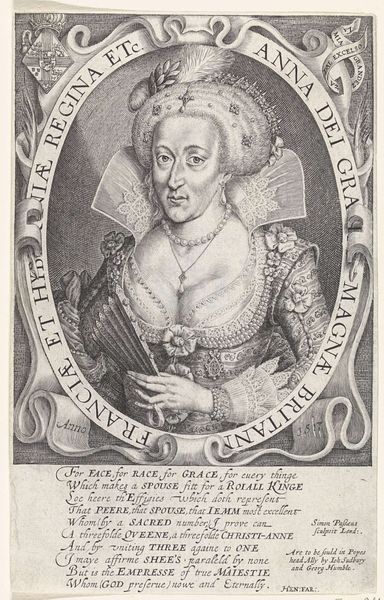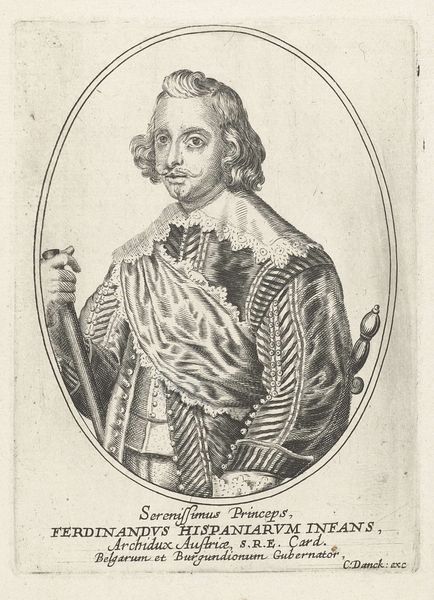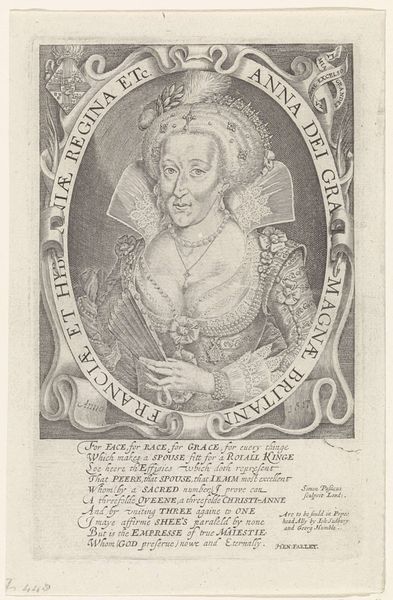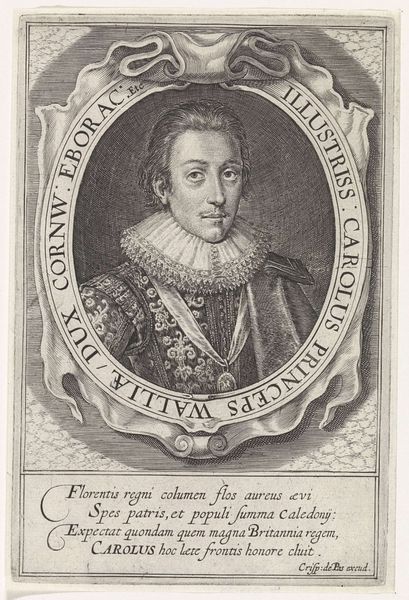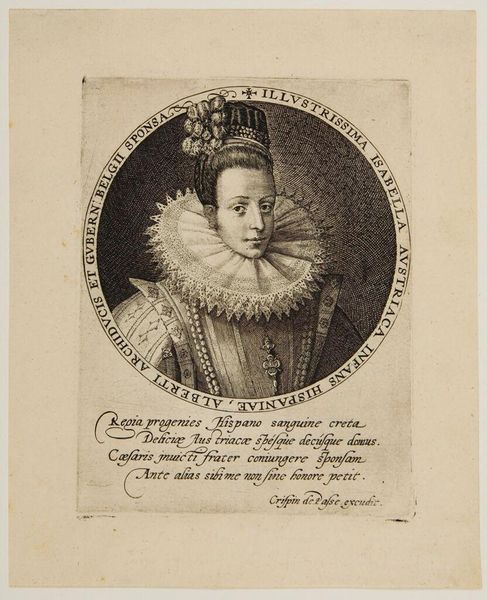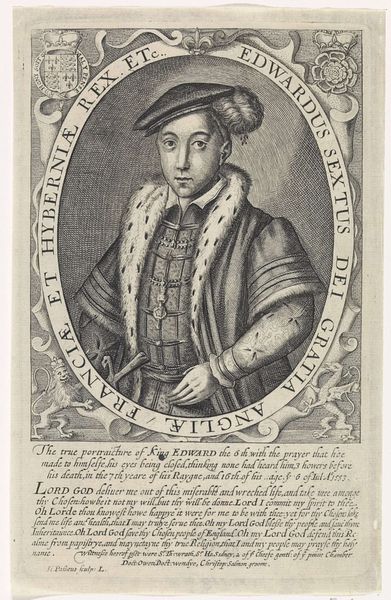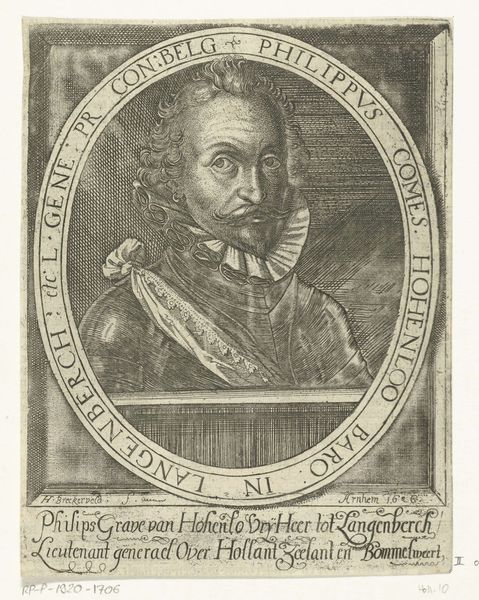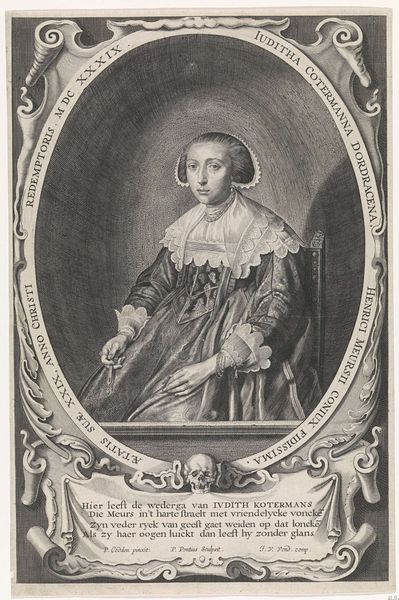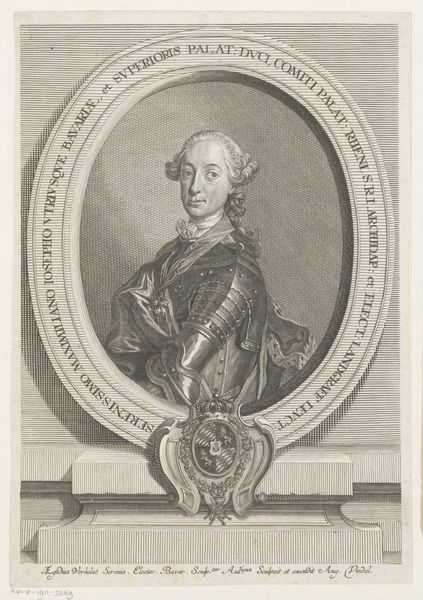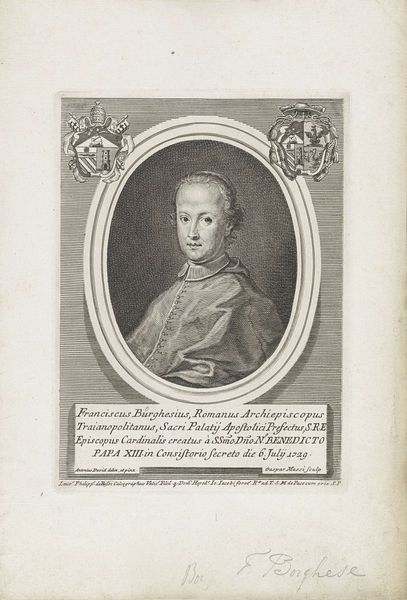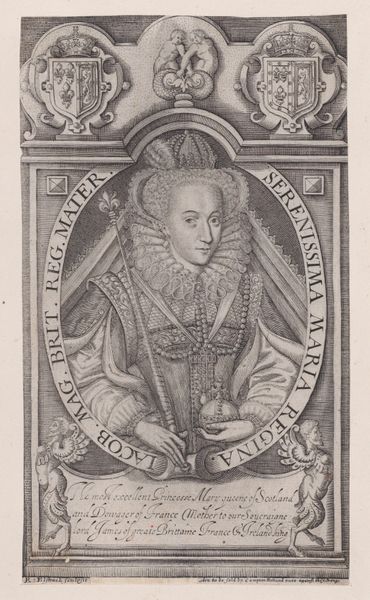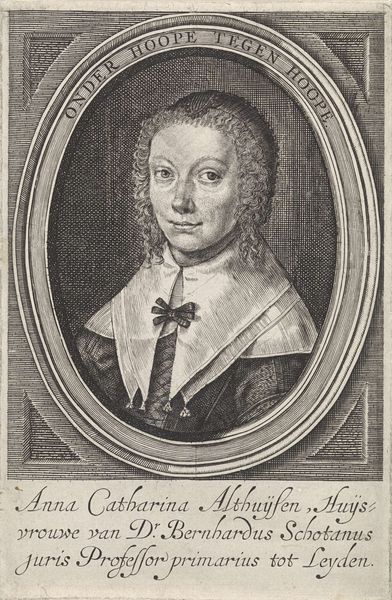
print, engraving
#
portrait
#
baroque
# print
#
engraving
Dimensions: height 145 mm, width 93 mm
Copyright: Rijks Museum: Open Domain
Curator: This engraving from 1613 by Simon van de Passe, titled "Portret van Karel I, koning van Engeland," resides in the Rijksmuseum. Editor: It has such a formal, almost stifling feel. The detail in the ruff is incredible, but also slightly overwhelming against the boy's soft face. Curator: Absolutely. That's the Baroque for you – intense detail used to convey status and power. It is a fascinating intersection between the subject, who would go on to be King Charles I, and the symbolism designed to amplify his position even as a young man. Notice how the frame almost merges into monstrous shapes with outstretched arms? Editor: And the meticulous rendering! Looking closely, I can almost feel the pressure of the engraver's tool as they carved into the copper plate. Consider the physical act: meticulously removing slivers of metal to create this image, multiples upon multiples… Curator: That repetition speaks to the power of dissemination. Engravings allowed portraits of monarchs to circulate widely, cementing their image in the public consciousness. Beyond that, the inscription offers key information as to his future role and legacy. "Great Britain" the text reads: foreshadowing his dominion over those isles. Editor: And the labor involved must have been considerable. We see now the marks of the stylus that pressed into the copper so long ago, making multiples and imprinting ideas and the royal's likeness into a tangible reality. That physicality is a fascinating counterpoint to the ethereal nature of power it conveys. Curator: A lovely observation. It really makes one think about cultural memory in how even an image, which may seem quite static now, carried so much weight for so many viewers when it was released. Editor: Indeed. And examining that tension – the almost industrial means of production against the elevated subject matter, highlights a key aspect of Baroque society. Curator: Yes, thinking about the engraving process really offers a lens through which to understand the power of such portraiture at that time. Editor: Well, thank you, I feel that portrait is more than the future king: it is a process made manifest.
Comments
No comments
Be the first to comment and join the conversation on the ultimate creative platform.

